There is a good reason that we treat certain houseplants as the green wallpaper of our homes: the odd splash of water and they seem to rub along fine. These are the species that have proved, over many decades, that they are best adapted to surviving in a vast range of situations. Unfortunately, familiarity breeds contempt, so many of us dismiss snake plants, spider plants, Swiss cheese plants and dragon trees as uninspiring and basic, even though they are the species that are likely to thrive, whatever the conditions.
The key to making “bog standard” houseplants look good is to display them in an atypical way: an oversized trough of snake plants rather than a few leaves in a lonely pot; the silhouette of a mass of plain green spider plants in a huge hanging basket instead of a spindly cream-striped specimen on a shelf; or a forest of dragon trees in a huge barrel planter. If you love flowers, moth orchids (Phalaenopsis) are a great choice as they are incredibly tough, and unfazed by the centrally heated air of our homes. Again, think about innovative ways of presenting them: they can look amazing massed in a single container.
When it comes to shopping for houseplants, bear in mind that many plants sold in DIY stores, houseplant shops and supermarkets are not marketed with longevity in mind. Have you ever met anyone with a calathea older than a few months, for instance? So choose your purchase carefully. If your home lacks natural light (small windows and a north-facing aspect are the usual predictors of this), your options are far more limited: plain green-leaved houseplants such as the cast-iron plant (Aspidistra elatior), grape ivy (Cissus rhombifolia) and kangaroo ivy (Cissus antarctica) will do well in darker corners. But remember that if it is too dark to read a book without a light on, it’s too dark for a houseplant to grow.
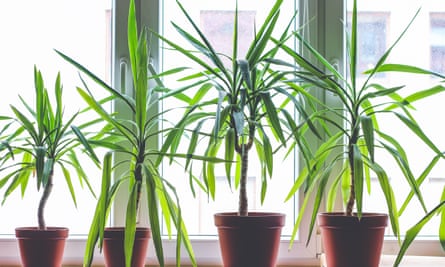
If you have a sunnier home, cacti and succulents are a great choice: the forest cacti in particular are well suited to indoor growing and can live for decades. They are found in the tree canopies of South America, so do not need as much sunlight as the desert cacti. The Christmas, Easter and Thanksgiving cacti (Schlumberger species) are probably best known but also look out for the mistletoe cacti (Rhipsalis species) and orchid cacti (Epiphyllum species). If you’re on a limited budget, these are easy to grow from cuttings, so beg your friends for cuttings to kickstart your collection. Jane Perrone
If only they could talk …
Falls, house moves, young children, long journeys in biscuit tins: these readers’ plants have endured it all, and they’re still going strong
My elderly Swedish orchids

When I left Sweden in 2011, I couldn’t take my plants with me, especially my rock orchid, which would have died in the moving truck. It was a Valentine’s present from my husband, so I was sad to part with it, but I gave it to a friend. I kept two small offshoots, wrapped them in damp kitchen towel and newspaper, put them in a biscuit tin, and carried them in my hand luggage on the plane to London.
Fourteen years later, I still have the orchids. They are happy to be watered whenever I remember, with water left out overnight. (It’s important never to use water straight from the tap.) People say orchids are very difficult, but my orchids are the only plants I can keep alive. Vanessa, library assistant, Dorset
Ralph, father of 20
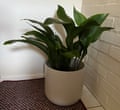
I purchased “Ralph”, my aspidistra, from a house clearance shop in Battersea in 1971. He has moved house with me many times during my long career. Over the years at least 20 root cuttings have been given to family, colleagues and friends, and they have thrived equally well. Ralph is best housed away from direct sunlight with space for new leaves to grow. He likes a drink once a week but does not start to turn yellow with anger until neglected for about three weeks. Keith Spanswick, 76, designer of medical equipment, Nottingham
Green-eyed monstera
We bought a fairly small monstera (Swiss cheese plant) about eight years ago and put it in the corner of our conservatory. It thrived, sending its tendrils across the granite walls, and was repotted after a couple of years. It is now completely enormous – around 8ft (2.4m) tall. It is totally living its best life. Robert Dunn, 62, self-catering manager, Strontian, Scotland
The peace lily that missed me
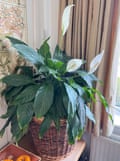
My peace lily started life as a very small office plant bought one lunchtime in Leeds market about eight years ago. It seemed happy enough while I was at work but every time I was away for a week or so it appeared to have died. I got many surprised comments from colleagues as I did some emergency intensive watering in the kitchen. It kept bouncing back and hung in there despite the bouts of neglect.
When I retired four years ago, I brought it home and started to give it a bit more attention. Even so, I just water it when it looks droopy and feed maybe once or twice a year. It rewards me with beautiful glossy leaves and regular flowers. Gillian Richardson, West Yorkshire
How to tame your dracaena

I have had what I think is a dracaena (dragon plant) since 1999. I was given it as a leaving present from my last employment. It’s about 8ft tall and requires almost no upkeep – it tolerates being forgotten for weeks at a time and always looks really healthy. Lower leaves dry and fall off, but I think that’s normal. I love it. Kate Edmonds, former career and executive coach, Alfriston, East Sussex
The rubber plant that bounced back
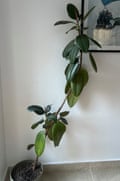
I picked up my rubber plant from Columbia Road flower market in London in 2018, as a tiny sapling. It has been through seven house moves, a pandemic and the arrival of three children under three who terrorise everything in reaching distance. It is still going strong, sprouting new leaves, and is now enjoying its twilight years. The secret? No idea. None of my other plants has fared as well. Kevin, 41, charity sector recruiter, London
My 8ft umbrella
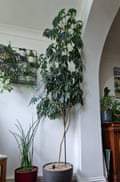
I have owned my umbrella plant since 2011, when I bought it from a DIY store in a 15cm pot. It is now about 8ft tall, and has been cut back several times.
Like many houseplants, it thrives on neglect, but this one is remarkable. It has helped that it has been set up like an office plant rather than a typical houseplant: large planter, large volume of compost, watering only once every few weeks. It responds well to pruning and several cuttings have been taken and grown on. Kenneth Freeman, interior landscaping consultant, Swanley, Kent
The begonias that won’t begone

I currently have three beefsteak begonias. The mother plant is about 30 years old and came from a single rooted leaf given out in a paper cup at a fundraiser for a political candidate. Over time I have rooted cuttings or broken off bits to give to family and neighbours. The mother plant was once knocked off the porch rail and fell 7ft to the ground; I gathered up the broken-off bits and rooted them.
I keep it in a sunny southern window in the winter and outside on the northern-exposure front porch the rest of the year. It is an extremely forgiving houseplant and propagates easily from cuttings, blooming from February till the end of April, with light pink flowers. Juliana Inman, 73, architect, Salem, Oregon, US
‘Watered’ by the cat

My dwarf umbrella plant was a present on my 25th birthday. It quickly grew into a large plant that spent its early life in a pot on the floor next to my parents’ back door. Mum would occasionally throw some water on it, but it thrived on benign neglect – covered in dust, leaned on, leaves crushed, occasionally “watered” by the cat and then cut back to within an inch of its life as it dared to push new branches or leaves beyond its allotted corner. It eventually moved with me to my own home, where it has since lived a largely event-free life. Forty years later, it is still thriving on benign neglect. Sally Nunn, 64, retired, Grimsby
A lily that toils not
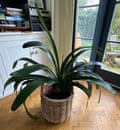
I was given my clivia (bush lily) by my late husband’s grandmother when we married in 1987. It has luscious green leaves and should have a large orange flower. The plant has thrived but is very temperamental when it comes to flowering. I have divided or repotted it every few years and fed it in spring and summer, but I have had only a handful of flowers in more than 30 years. Liz, Bury St Edmunds, Suffolk
Easy money
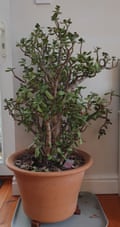
I inherited my money plant from my parents. I believe it was a present from when they married in the 80s. It lived in their conservatory and survived for 18 months, completely solo, after they passed away. When their property was sold I took some of the furniture and the plant. I was warned it would probably die, as it would be in storage for a month with no light. It looked extremely sad when we got it down to where I live in Cornwall. However, a warm spot in our children’s play space and some watering bulbs slowly revived it. I added fertiliser when I saw new growth and it is looking much happier and healthier now. Clearly, it is a survivor. Mark Ferguson, 33, researcher, Cornwall
People featured in the article responded to a Community callout. You can contribute to open callouts here.

.png) 19 hours ago
4
19 hours ago
4













































